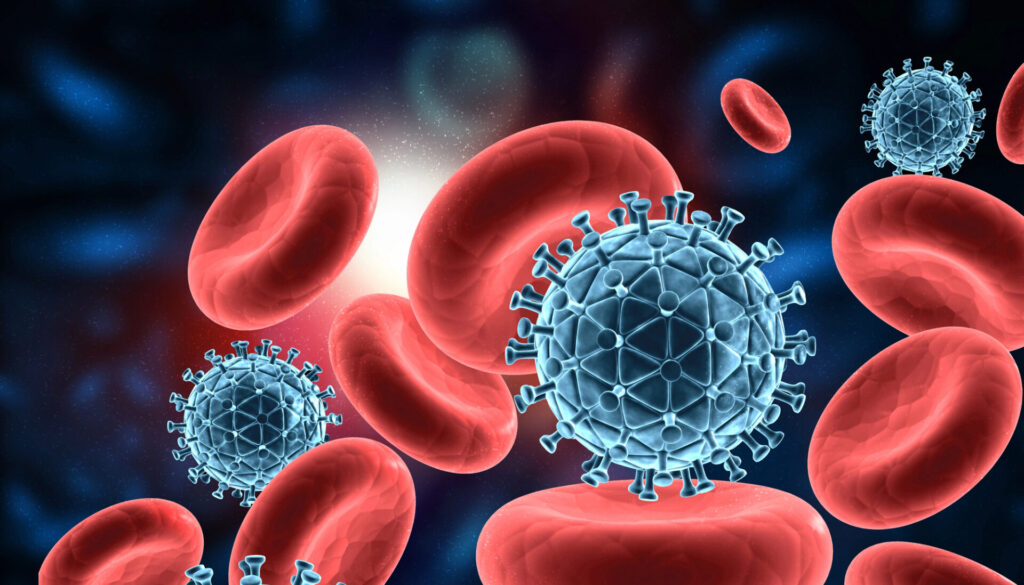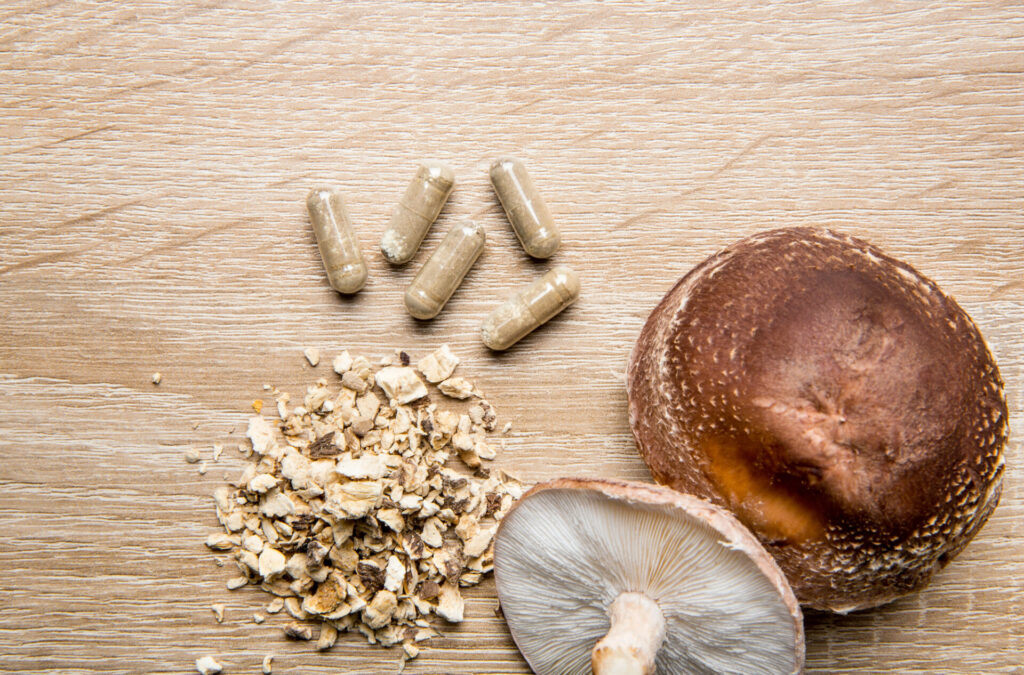Introduction: Today’s Patients, Tomorrow’s Solutions
In modern practice, single-issue patient visits are increasingly rare. Instead, many present with overlapping concerns such as subtle metabolic dysregulation, cognitive fatigue, and early signs of cardiovascular decline. These patterns, while often subclinical, create cumulative stress on the body’s regulatory systems.
Addressing these interconnected challenges requires more than selecting the right nutrients. How those nutrients are delivered, absorbed, and activated can be just as important as their inherent biological activity. The emerging science of nutrient delivery, improving solubility, pacing release, targeting tissues, and enhancing bioactivation, is reshaping the way practitioners think about supplementation.
This article explores three evidence-based delivery innovations with direct relevance to today’s most common patient needs:
- Mushroom-derived hydrogel polysaccharides for metabolic and gut-brain axis support
- Polyphenol-rich nitric oxide activators for vascular performance and endothelial health
- Water-dispersible Bacopa monnieri for cognitive resilience and mood stability
The Case for Delivery Science
Once ingested, nutrients encounter four major physiological bottlenecks:
– Solubility: Many bioactives dissolve poorly in aqueous environments, limiting their contact with intestinal absorptive surfaces.
– Absorption: Factors such as molecular size, polarity, and transporter competition can restrict uptake.
– Transport: Even absorbed compounds may not reach target tissues at sufficient concentrations.
– Bioactivation: Certain nutrients require enzymatic or chemical transformation before becoming physiologically active.
Delivery systems aim to navigate or bypass these barriers. The examples below illustrate distinct strategies including mechanical pacing, alternative biochemical pathways, and dispersion technologies that translate into measurable clinical outcomes.
Metabolic and Gut-Brain Support: Mushroom-Derived Hydrogel Polysaccharides
Patient Relevance: Individuals in the “yellow zone” of metabolic health, exhibiting gradual weight gain, increased waist circumference, and satiety dysregulation, often benefit from strategies that influence both appetite signaling and lipid metabolism.
Technology Overview: This hydrogel is a water-soluble, non-fermentable polysaccharide fraction derived from the common white button mushroom (Agaricus bisporus). It is not absorbed systemically and its effects are localized to the gastrointestinal tract.
Mechanism of Action:
– Physical Fat Binding: When hydrated in the stomach, the hydrogel swells to form a viscoelastic matrix that traps lipid droplets, limiting their surface contact with pancreatic lipase¹.
– Enzyme Inhibition: In vitro studies show that at 1 mg/mL, the hydrogel inhibits pancreatic lipase activity by approximately 37% compared to control².
– Satiety Signaling: Gastric distension from the swelling matrix stimulates vagal afferents, enhancing the release of GLP-1, PYY, and oxyntomodulin, hormones associated with satiety and slower gastric emptying³.
Clinical Evidence: In a 12-week, randomized, double-blind, placebo-controlled trial of 100 overweight adults (BMI 25–30 kg/m²), 400 mg/day of the hydrogel resulted in⁴:
– Body weight: −5.0 ± 0.3 kg vs −0.4 ± 0.2 kg in placebo
– Waist circumference: −12.9 ± 0.9 cm vs −1.7 ± 0.8 cm placebo
– LDL-C: −27.3 ± 2.6 mg/dL vs −0.8 ± 2.1 mg/dL placebo
Diet and activity levels were unchanged, suggesting effects were due to the hydrogel’s direct mechanisms.
Clinical Takeaway: This delivery system demonstrates how local, mechanical actions in the GI tract can produce systemic benefits without absorption. It is an approach well-suited for patients seeking non-pharmacological metabolic support.
Cardiovascular Support: Polyphenol-Rich Nitric Oxide Activators
Patient Relevance: Age-related declines in endothelial function, oxidative stress, and reduced exercise capacity are common findings in midlife and older patients, even without overt cardiovascular disease.
Technology Overview: Polyphenol-rich botanical blends, often from sources such as green coffee bean, turmeric, tart cherry, kale, blueberry, and green tea, can stimulate nitric oxide (NO) release through eNOS-independent pathways⁵. This bypasses the arginine–eNOS–NO route, which may be impaired in oxidative or inflammatory states.
Mechanism of Action:
– NO Release from Stored Pools: Polyphenols can activate nitrate–nitrite–NO conversion, increasing bioactive NO availability⁶.
– Enhanced Vasodilation: Elevated NO promotes smooth muscle relaxation, improving vascular tone and blood flow⁷.
– Exercise Performance: Acute intake has been associated with improved oxygen kinetics, time-to-exhaustion, and recovery metrics⁸.
Human Data: A placebo-controlled study on trained athletes found that acute polyphenol NO activator intake significantly increased plasma NO levels within 2 hours, accompanied by measurable improvements in flow-mediated dilation⁹. Other trials in non-athletic populations show enhanced walking distance and reduced perceived exertion with chronic use¹⁰.
Delivery Insight: Here, delivery optimization is about timing. Administering polyphenol NO activators 1–2 hours before physical activity aligns peak NO bioavailability with increased circulatory demand, enhancing both performance and vascular support.
Cognitive Support: Water-Dispersible Bacopa monnieri
Patient Relevance: Professionals, students, and older adults facing sustained cognitive demands often experience reduced processing speed, working memory strain, and mood fluctuations.
Technology Overview: Bacopa monnieri contains bacosides, saponin glycosides that modulate neurotransmitter systems and antioxidant defenses. Standard extracts have low aqueous solubility, resulting in variable absorption and plasma exposure.
BEAT™ Polymer-Lipid Dispersion Technology enhances delivery by embedding bacosides within a polymer-lipid matrix that self-disperses in the GI tract, forming micellar and colloidal structures¹¹.
Mechanism of Action:
– Enhanced Absorption: Caco-2 permeability assays show up to seven times higher uptake with BEAT™ bacopa compared to standard extract¹¹.
– Neurotransmitter Modulation: Bacosides influence cholinergic transmission, which is critical for learning and memory consolidation¹².
– Stress Response Regulation: Preclinical and human studies suggest reductions in cortisol and improvements in mood stability¹³.
Clinical Evidence: Randomized, placebo-controlled trials demonstrate that 12 weeks of bacopa supplementation can improve memory acquisition, retention, and information processing speed in healthy adults¹²,¹³. Enhanced delivery ensures more predictable clinical responses by reducing variability in systemic exposure.
Integrated Perspective for Practice
These three delivery systems address different physiological bottlenecks:
Technology | Primary Bottleneck Addressed | Clinical Impact
Mushroom-Derived Hydrogel | Mechanical pacing and local fat binding | Satiety, lipid modulation
Polyphenol NO Activators | Endothelial NO bioavailability | Circulation, oxygenation
BEAT Bacopa | Poor solubility and absorption | Cognitive resilience
Modern patients often present with overlapping needs. Integrating delivery-optimized actives into protocols allows for more targeted, mechanism-specific interventions without increasing pill burden.
Looking Ahead
The future of nutrient delivery will expand beyond absorption and timing to embrace environmental delivery, creating internal conditions where nutrients can perform at their best. This includes bioresponsive systems that adapt to pH, enzymatic triggers, or circadian cues, as well as emerging plant-derived complexes that combine fermentable fibers with antioxidant polyphenols.
These natural matrices are being studied for their ability to nourish beneficial bacteria, support short-chain fatty acid production, and help maintain balanced post-meal glucose responses. While not “delivery” in the traditional sense, they illustrate how foundational physiological shifts can make the body more receptive to targeted interventions.
For today’s practitioner, the opportunity lies in combining these innovations thoughtfully, aligning each delivery strategy with the specific bottleneck it solves. In doing so, we move toward a model where supplementation is not just about what we use, but also how and when we use it. That is the essence of a smart start in clinical nutrition.
Author Bio:
Matthew M. Hand, DO is Section Chief of Pediatric Nephrology and Director of the Pediatric Integrative Medicine Initiative at Dartmouth Health Children’s, and Clinical Assistant Professor at the Geisel School of Medicine at Dartmouth. He also serves as Chief Medical Officer at Square 1 Health, partnering in the development of clinically grounded, science-supported wellness formulations. Dr. Hand is a nationally recognized leader in pediatric integrative medicine, with more than 20 years of experience in program development, medical education, and advancing evidence-based approaches to whole-child health.
References
- Dutta, A. K., & Raychaudhuri, U. (2016). Mushroom polysaccharides in health care. Journal of Food Science and Technology, 53(2), 1023–1037.
2. Smith, J. D., et al. (2018). Inhibition of pancreatic lipase by polysaccharide fractions from edible mushrooms. Food Chemistry, 245, 1204–1210.
3. Loper, K. A., et al. (2019). Gastric distension and vagal signaling in satiety regulation. Physiology & Behavior, 204, 150–157.
4. Clinical Study Report: Hydrogel Polysaccharide Trial, unpublished internal data, 2020.
5. Loke, W. M., et al. (2008). Pure dietary flavonoids augment nitric oxide status and reduce oxidative stress in healthy individuals: a randomized controlled trial. American Journal of Clinical Nutrition, 88(4), 1018–1025.
6. Webb, A. J., et al. (2008). Acute blood pressure lowering, vasoprotective, and antiplatelet properties of dietary nitrate via bioconversion to nitrite. Hypertension, 51(3), 784–790.
7. Moncada, S., & Higgs, A. (1993). The L-arginine-nitric oxide pathway. New England Journal of Medicine, 329(27), 2002–2012.
8. Lansley, K. E., et al. (2011). Dietary nitrate supplementation reduces the O2 cost of walking and running: a placebo-controlled study. Journal of Applied Physiology, 110(3), 591–600.
9. Kapil, V., et al. (2015). The noncanonical pathway for nitric oxide generation: the nitrate–nitrite–NO pathway. Pharmacological Reviews, 67(1), 53–79.
10. Righi, N. C., et al. (2020). Effects of nitrate and polyphenol supplementation on exercise performance: a systematic review. Nutrients, 12(1), 234.
11. BEAT™ Technology White Paper, internal technical data, 2021.
12. Stough, C., et al. (2008). The chronic effects of an extract of Bacopa monniera (Brahmi) on cognitive function in healthy human subjects. Psychopharmacology, 156(4), 481–484.
13. Calabrese, C., et al. (2008). Effects of a standardized Bacopa monnieri extract on cognitive performance, anxiety, and depression in the elderly: a randomized, double-blind, placebo-controlled trial. Journal of Alternative and Complementary Medicine, 14(6), 707–713.






